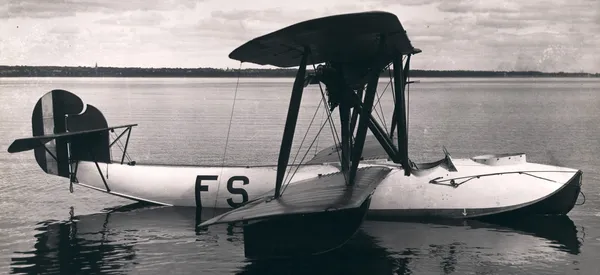Lemoine, Gerard Alphonsus A (Flying Officer)
Killed in Flying Accident 1929-September-10

Birth Date: unkown date
Born:
Parents:
Spouse:
Home:
Enlistment:
Enlistment Date: unkown date
Service
RCAF
Unit
Base
Rank
Flying Officer
Position
Service Numbers
Vedette serial: G-CYZO

Canadian Vickers Vedette I, RCAF Reg. No. G-CYFS
The Canadian Vickers Vedette was the first aircraft designed and built in Canada to meet a specification for Canadian conditions. It was a single-engine biplane flying boat purchased to meet a Royal Canadian Air Force (RCAF) demand for a smaller aircraft than the Vickers Viking with a much greater rate of climb, to be suitable for forestry survey and fire protection work. The type went on to have a long and distinguished career in civil operations in Canada. Most of the topographical maps in use in Canada today are based on photos taken from these aircraft.
Based on a preliminary design in early 1924 for a "flying boat" by R.K.Pierson of the British company Vickers, the Canadian Vickers Vedette was a two/three-seat single-engine pusher aircraft. The design was passed over to the subsidiary Canadian Vickers Limited of Longueuil, Quebec (formed in 1911) where Wilfrid Thomas Reid served as Chief Engineer. The prototype Vedette I was first flown on 4 November 1924, powered by a 200 hp (150 kW) Rolls-Royce Falcon III. It was subsequently fitted with 210 hp (160 kW) Wolseley Viper, 200 hp (150 kW) Wright J-4 and 215 hp (160 kW) Armstrong Siddeley Lynx engines for testing. Several versions of the Vedette were produced, including two amphibious versions and one with an enclosed cabin on an all-metal hull. With the exception of these major changes, most of the remaining differences between versions were relatively minor and not externally visible. Each version was produced with a range of optional engine types.
The first production example was provided to Fairchild Aerial Surveys (c/n 31 G-CAFF) before they started designing their own survey aircraft. The majority of the production run was purchased by the RCAF where the aircraft proved popular and versatile, if somewhat temperamental due to leaky hulls that required constant maintenance (a problem afflicting all wooden hulled flying boats). The Vedette undertook photographic and forestry patrols satisfactorily and provided a backbone for RCAF flying operations through the lean peacetime years. Vedettes started a coast-to-coast photographic survey that was needed to map out the large areas of the country still unmapped. These missions lasted until the outbreak of the Second World War, and would be completed after the war with newer types. Vedettes stationed on both coasts were also used for fishing and smuggling patrols, both with the RCAF and with Western Canada Airways. Wikipedia
A hull of one of the Saskatchewan-owned aircraft, along with a replica built by volunteers, are on display at the Western Development Museum, in Moose Jaw, Saskatchewan.
![]() Wikipedia Canadian Vickers Vedette
Wikipedia Canadian Vickers Vedette